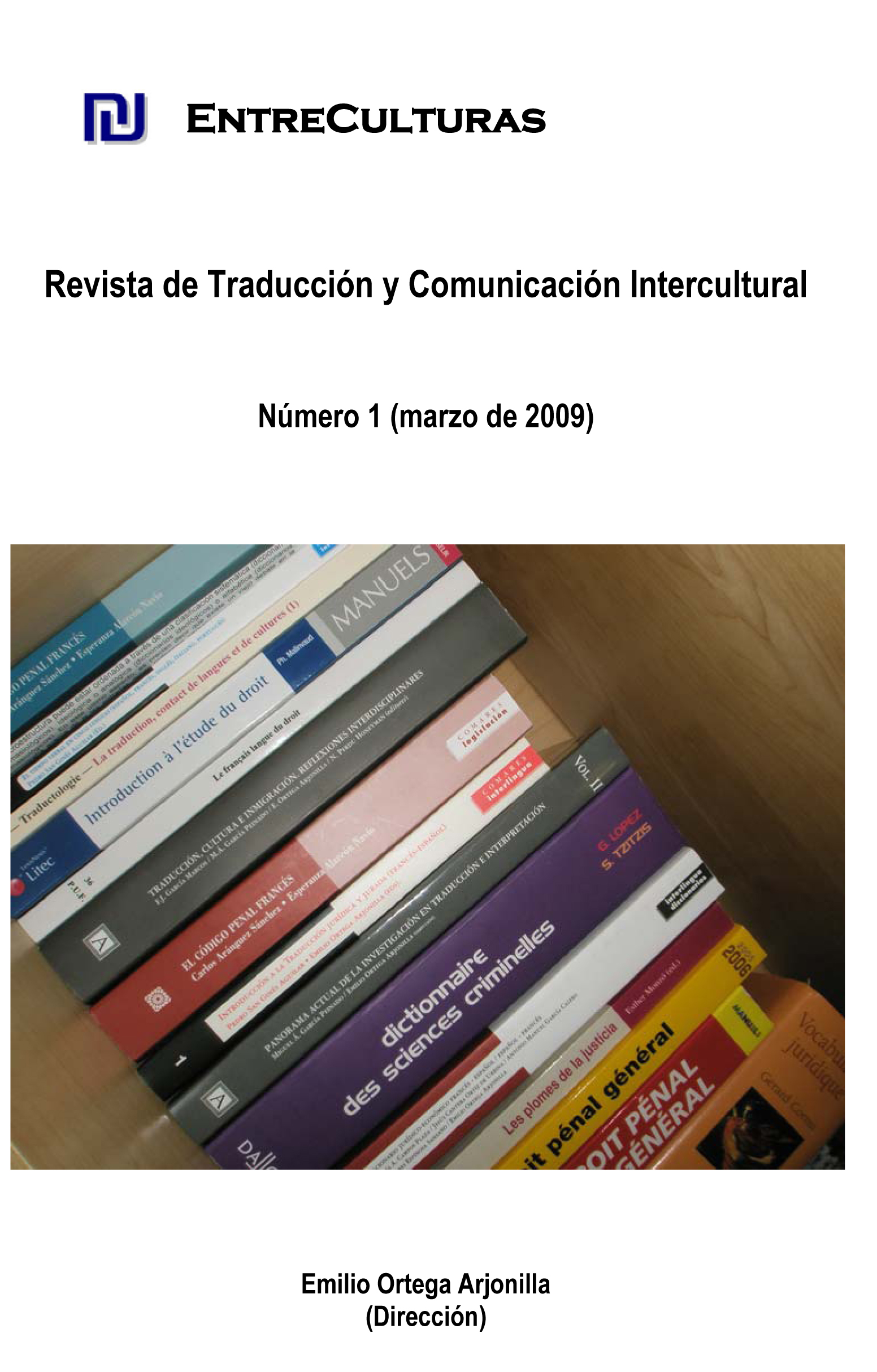DISEÑO DE UNA ASIGNATURA SOBRE CONOCIMIENTOS DEL MERCADO PROFESIONAL DE LA TRADUCCIÓN EN EL MARCO DEL NUEVO GRADO DE TRADUCCIÓN E INTERPRETACIÓN
DOI:
https://doi.org/10.24310/Entreculturasertci.vi1.11889Keywords:
estudios de traducción, didáctica de la traducciónAbstract
The educational context of the study is based on the European Higher Education Area and in particular on the training of translators during the final year of the Translation and Interpretation degree studies at the Universidad Autónoma de Madrid. The analysis applies to the learning and teaching of English-Spanish translation of legal and business documents in the private sector and is followed by providing a subject design included in the basic subjects of the review report of the Universidad Autónoma de Madrid Translation and Interpretation degree. This analysis aims to fill two gaps in the current curriculum of the UAM degree in Translation and Interpretation (Official State Gazette (Boletín Oficial de Estado) of 4/12/2002), that is to say, on the one hand, the absence of subjects that produce to the learner knowledge of the professional translation market and practice (certain peculiarities of the professional translation market, from the point of view of supply and demand of translation services and how these will affect the translation outcome, have been analysed in the study) and, on the other hand, the absence of subjects that produce specific knowledge of a given subject (basic knowledge of law, trade, economics and finance) that the new graduate will need to confront the translation of legal and business documents in the private sector.
Downloads
Metrics
References
BORJA ALBÍ Y MONZÓ NEBOT, E. (2002a): “Aplicación de los métodos de aprendizaje cooperativo a la enseñanza de la traducción jurídica: cuaderno de bitácora”, en Edutec, Congreso internacional de tecnología, educación y desarrollo sostenible. Murcia: Universidad de Murcia.
BRAVO UTRERA Y FIDALGO GONZÁLEZ, L. (2005): “Aplicaciones didácticas de los resultados de una investigación de mercado en la enseñanza de la traducción escrita”, en IV Jornadas sobre la Formación y Profesión del Traductor e Intérprete. Madrid: Publicaciones de la Universidad Europea de Madrid. Disponible en URL: www.uem.es/web/fil/invest/publicaciones/web/autores/bravoutrera_art.htm. [Fecha de consulta: 3 de mayo de 2006]
KELLY, D. (2002): “Un modelo de competencia traductora: bases para el diseño curricular”, en Puentes 1. Granada: Comares.
KIRALI, D.C. (2000): A Social Constructivist Approach to Translator Education. Manchester: St. Jerome.
LEY ORGÁNICA DE UNIVERSIDADES (4/2007 de 12 de abril) http://www.boe.es/boe/dias/2007/04/13/pdfs/A16241-16260.pdf
MAYORAL ASENSIO, R. (1997): “La traducción especializada como operación de documentación”, en Sendebar. Granada: Universidad de Granada.
MAYORAL ASENSIO, R. (2000): ¿Son los estudios de traducción una ciencia? Disponible en URL: http://www.gitrad.uji.es/common/articles/Mayoral1.pdf. [Fecha de consulta: 11 de julio de 2007]
ORTEGA ARJONILLA, E. (1999): Proyecto docente y de investigación. Docencia en traducción especializada francés-español, español-francés (B). Textos científico-técnicos. Plaza de profesor titular de Universidad del área de Traducción e Interpretación de la Universidad de Málaga. 2 volúmenes. Inédito. Málaga: Universidad de Málaga.
SCHAFFNER, CH. (ed.) (1998): Translation and Quality. Manchester: St. Jerome.
ZABALBEASCOA, P. (2000): La didáctica de la traducción: desarrollo de la competencia traductora. Barcelona: Universidad Pompeu Fabra. [Disponible en URL: http://cvc.cervantes.es/obref/aproximaciones/zabalbeascoa.htm#10. Fecha de consulta: 3 de marzo de 2005].
Downloads
Published
How to Cite
Issue
Section
License
All contents published in Entre culturas. Revista de traducción y comunicación intercultural are protected under the Creative Commons Attribution-NonCommercial-ShareAlike 4.0 International (CC BY-NC-SA 4.0) license. All about this license is available in the following link: <http://creativecommons.org/licenses/by-nc-sa/4.0>
Users can copy, use, redistribute, share and exhibit publicly as long as:
- The original source and authorship of the material are cited (Journal, Publisher and URL of the work).
- It is not used for comercial purposes.
- The existence of the license and its especifications are mentioned.
There are two sets of authors’ rights: moral and property rights. Moral rights are perpetual prerogatives, unrenounceable, not-transferable, unalienable, imprescriptible and inembargable. According to authors’ rights legislation, Entreculturas. Revista de traducción y comunicación intercultural recognizes and respects authors moral rights, as well as the ownership of property rights, which will be transferred to University of Malaga in open access. The property rights are referred to the benefits that are gained by the use or the dissemination of works. Entreculturas. Revista de traducción y comunicación intercultural is published in an open access form and it is exclusively licenced by any means for doing or authorising distribution, dissemination, reproduction, , adaptation, translation or arrangement of works.
Authors are responsable for obtaining the necessary permission to use copyrighted images.





7.png)
